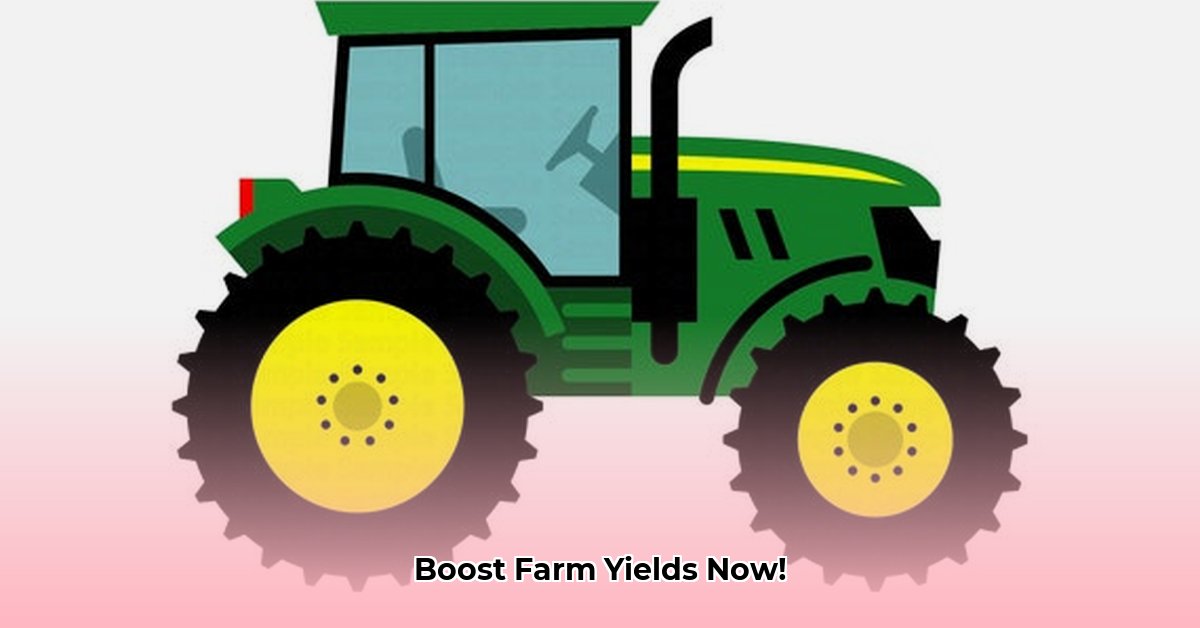
Facing the Challenges: Sustainable Farming in the Digital Age
Precision agriculture might sound complex, but it's simply about using technology smartly to boost your farm's productivity and sustainability. Think of a simple tractor clipart – it represents the potential for growth. This guide walks you through how to leverage technology, even on a small budget, to improve your yields and build a thriving, sustainable farm. But let's be realistic: adoption isn't always easy. For a visual representation, check out this simple tractor drawing.
Many smallholder farmers face obstacles like limited access to funding, lack of training, and the complexity of choosing the right technology. However, these challenges are surmountable with a clear plan and the right support. This guide provides practical steps to navigate these hurdles and unlock your farm's full potential. How can we overcome these barriers and empower smallholder farmers to adopt precision agriculture practices?
Three Pivotal Points for Success
- Targeted Technology Selection: Choosing affordable, user-friendly tech that directly addresses your farm’s specific needs is crucial.
- Strategic Funding Access: Exploring diverse funding sources, including microloans and government grants, opens doors to necessary investments.
- Continuous Learning and Support: Ongoing training and access to supportive networks are vital for successful implementation and long-term sustainability.
A Step-by-Step Guide to Implementing Precision Agriculture
Let's translate that simple tractor clipart into actionable steps towards a more productive and profitable farm:
Assess Your Farm's Needs (Step 1): Begin by honestly evaluating your current farming practices. What are your biggest challenges? Are you struggling with water management, inefficient fertilizer use, or pest control? Identifying these pain points is the first step towards effective solutions. This thorough assessment will guide your technology choices and funding requests.
Choose the Right Technology (Step 2): Don't feel pressured to invest in expensive, high-tech equipment immediately. Start with simple, affordable tools that address your top priorities. A soil moisture sensor can optimize irrigation, while a basic weather station can improve planting and harvesting timing. Remember, effective technology is smart, not necessarily expensive.
Secure Funding and Resources (Step 3): Explore diverse funding options. Microloans, government grants specifically designed to support sustainable agriculture, and even collaborating with other farmers to pool resources are all viable paths. Many resources exist to help you get started. Remember to meticulously document your needs and demonstrate how the technology will increase efficiency and profitability.
Training and Support (Step 4): Investing in training is vital. Participate in workshops, online courses, or seek mentorship from experienced farmers. Many organizations offer valuable resources to help you learn and master new technologies and farming techniques. Don't hesitate to ask for help – there's often more support available than you realize.
Implement and Monitor (Step 5): After implementing your chosen technologies, consistently monitor their impact. Track your yields, resource usage, and overall farm efficiency. This data allows you to refine your approach, ensuring continuous improvement and maximum efficiency. This iterative process is key to long-term success.
Long-Term Sustainability: Beyond the Immediate Harvest
Sustainable farming is a long-term commitment. Joining a farmer's cooperative allows for shared resources, knowledge exchange, and collective problem-solving. This collaborative approach is crucial for navigating challenges and fostering innovation. Furthermore, actively seeking market opportunities and building strong partnerships with buyers is essential for sustained economic success. What are the long-term benefits of embracing sustainable farming practices?
“Sustainable agriculture isn’t just about environmental stewardship; it’s about building resilient, profitable farms for generations to come,” says Dr. Anya Sharma, Agricultural Economist at the World Bank.
Technology Options: A Practical Overview
Different technologies offer various benefits and drawbacks. Select the technology that best suits your farm's specific context and resources.
| Technology | Pros | Cons |
|---|---|---|
| GPS-Guided Tractors | Increased accuracy, reduced fuel consumption, higher yields. | High initial cost, requires training. |
| Simple Soil Sensors | Affordable, user-friendly, optimizes irrigation. | Limited range, may require occasional recalibration. |
| Drone Imagery for Field Analysis | Comprehensive field overview, early problem detection. | Weather dependent, requires specialized skills, privacy considerations. |
| Precision Fertilizer Application | Reduced fertilizer use, improved nutrient uptake, enhanced crop yields. | Requires specialized equipment, training is essential for effective use. |
Remember, that simple tractor clipart represents the power of combining traditional farming knowledge with smart technologies. By taking these steps, you’re not just improving your yields; you're building a more sustainable and prosperous future for your farm. Are you ready to transform your farming practices?